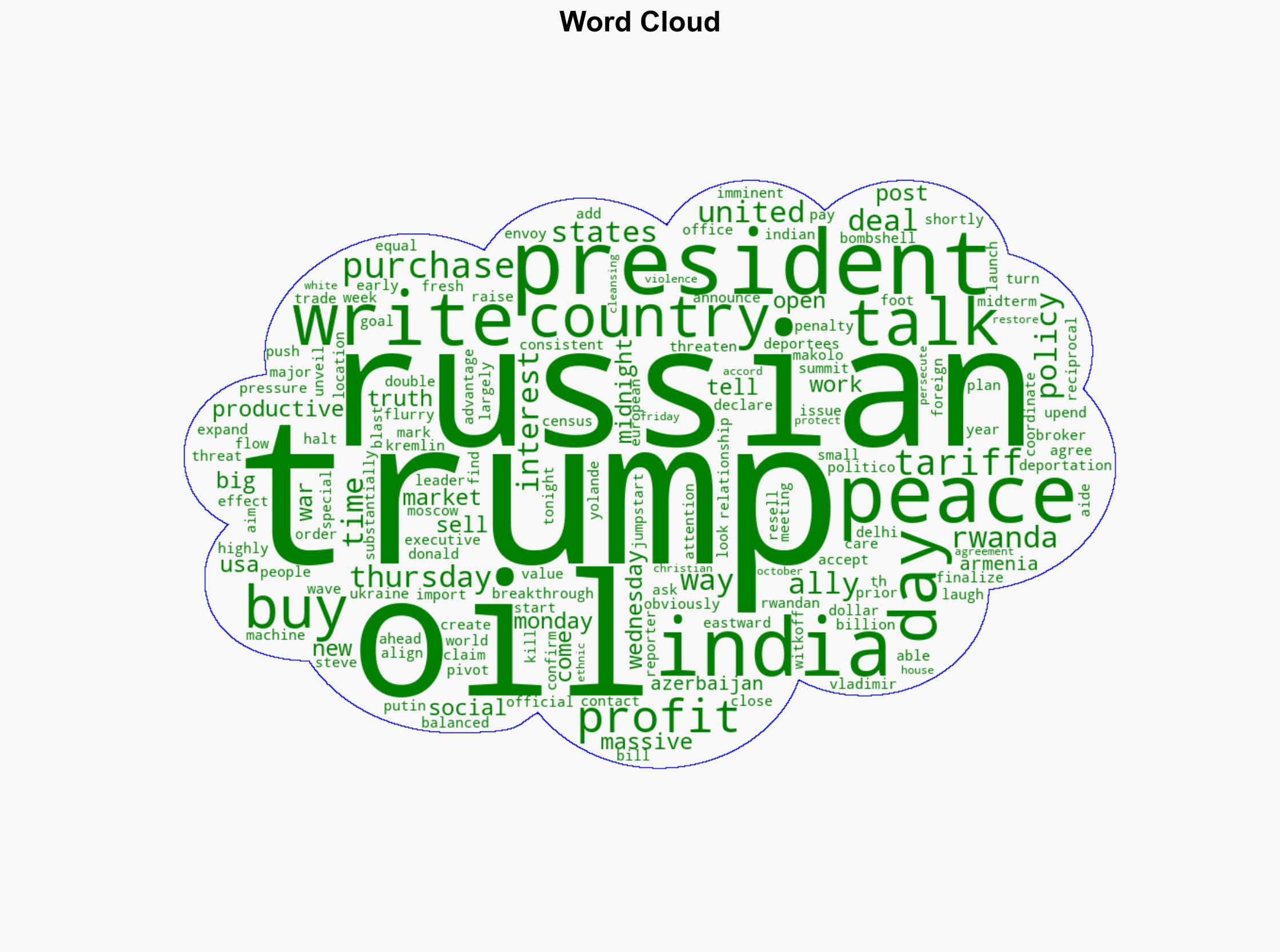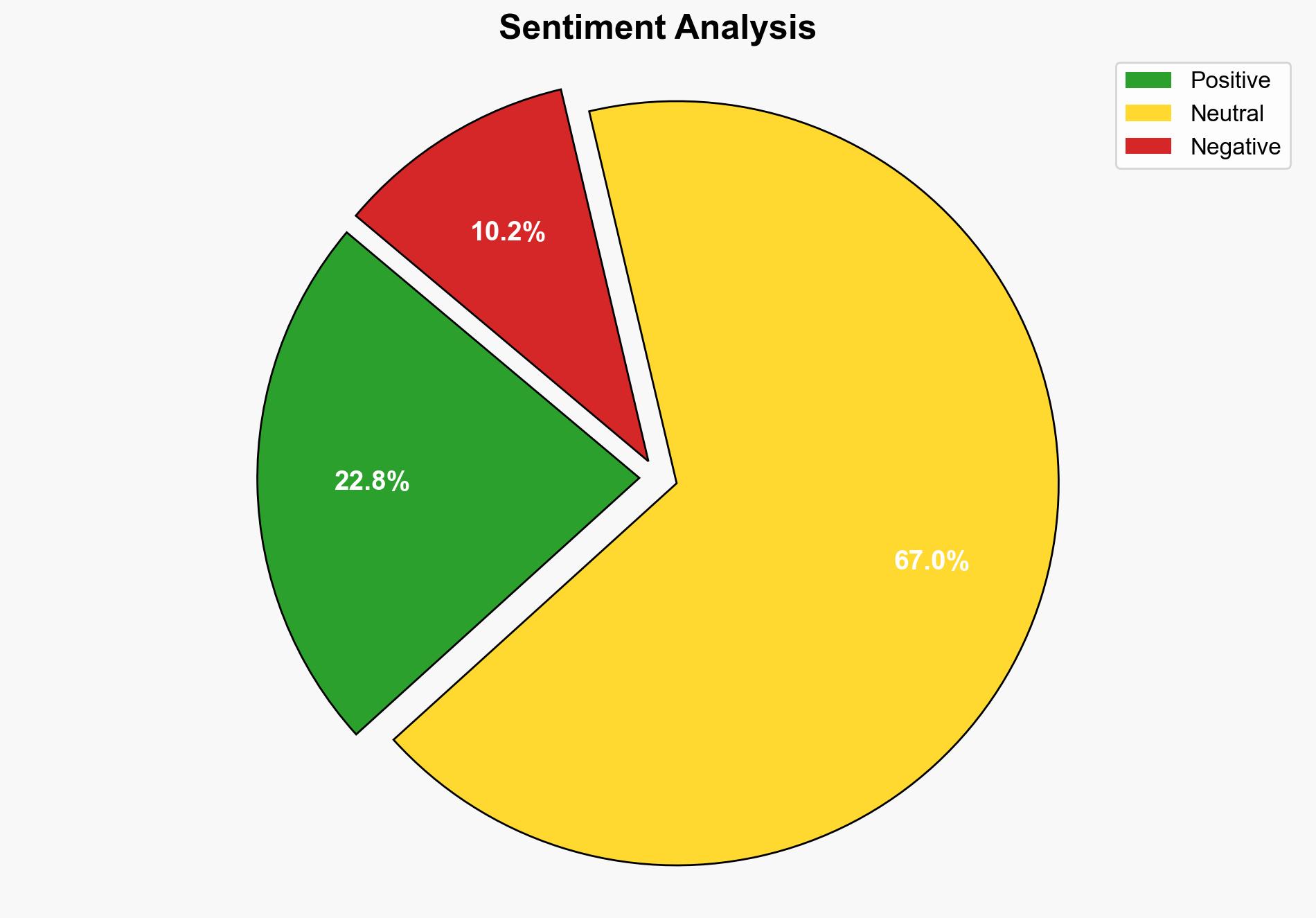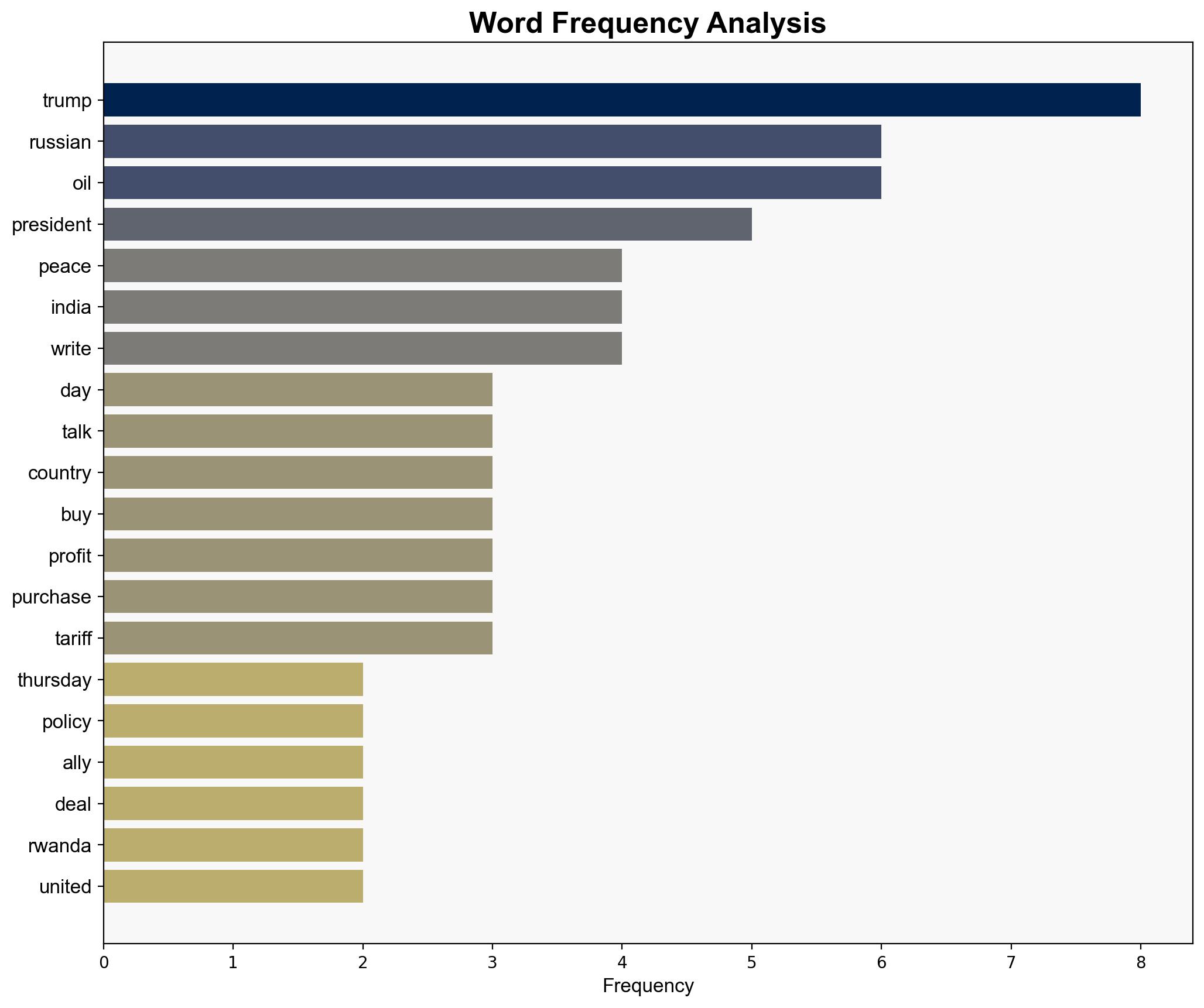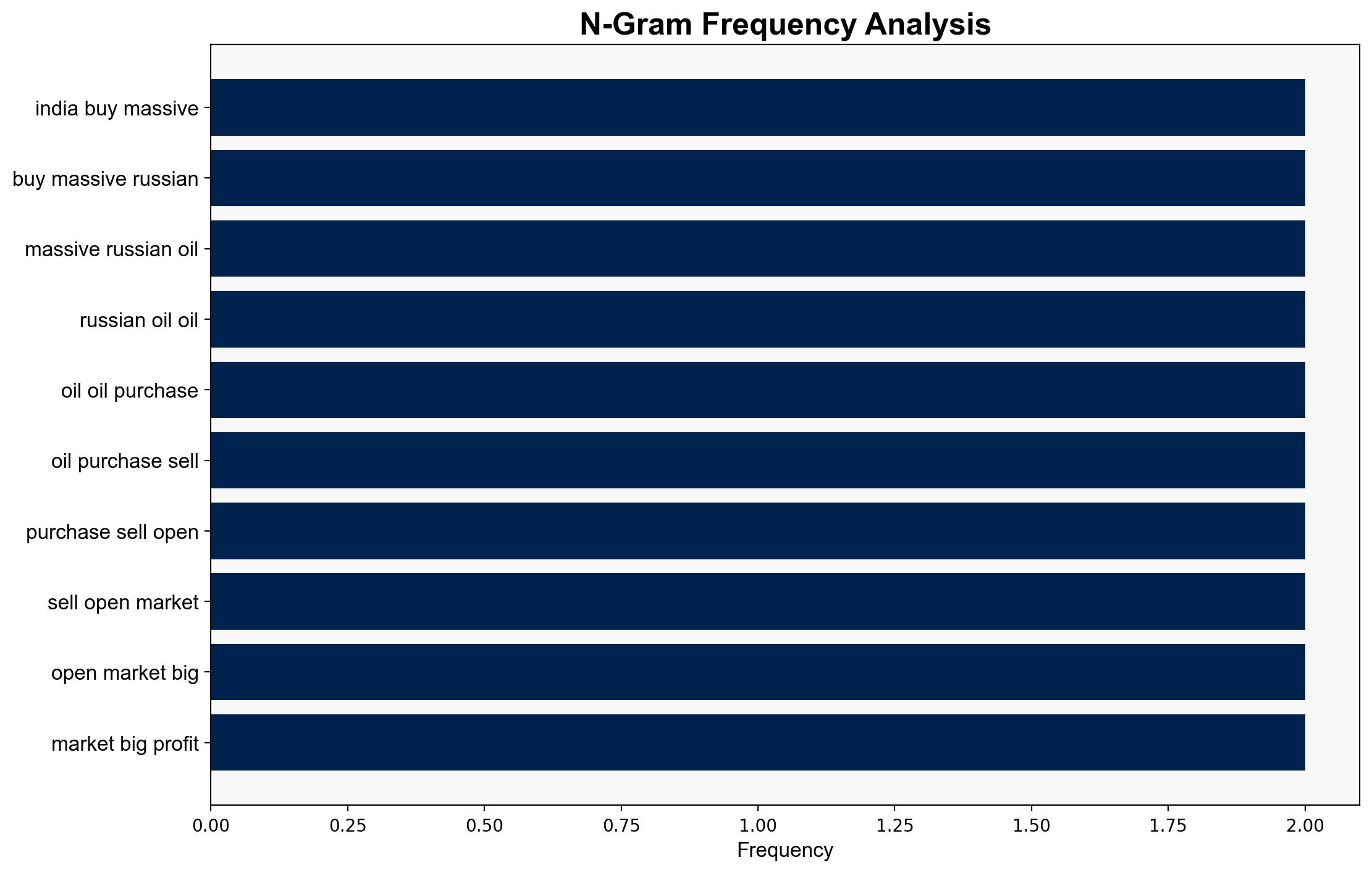Working The Room And World Trump Confronting Several Countries At Once Shows No One Is Off Limits – The Daily Caller
Published on: 2025-08-07
Intelligence Report: Working The Room And World Trump Confronting Several Countries At Once Shows No One Is Off Limits – The Daily Caller
1. BLUF (Bottom Line Up Front)
The strategic judgment is that the most supported hypothesis is that Donald Trump’s foreign policy maneuvers are primarily aimed at leveraging economic pressure to achieve geopolitical objectives, with a moderate confidence level. The recommended action is to closely monitor the economic impacts and diplomatic responses from the targeted countries, particularly India and Russia, to anticipate potential shifts in alliances or escalations.
2. Competing Hypotheses
1. **Economic Leverage Hypothesis**: Trump’s actions are primarily driven by a strategy to use economic pressure, such as tariffs and trade threats, to achieve broader geopolitical goals, including influencing countries’ foreign policy decisions and strengthening U.S. global standing.
2. **Domestic Political Strategy Hypothesis**: The foreign policy moves are primarily aimed at bolstering domestic political support by projecting strength and decisiveness on the international stage, potentially distracting from domestic challenges or controversies.
Using the Analysis of Competing Hypotheses (ACH) 2.0, the Economic Leverage Hypothesis is better supported. The consistent pattern of economic threats and deals, such as the tariff threats to India and the deportation agreement with Rwanda, aligns with a strategy focused on economic influence.
3. Key Assumptions and Red Flags
– **Assumptions**: It is assumed that economic pressure will effectively influence foreign governments’ policies. Another assumption is that these moves will not backfire domestically or internationally.
– **Red Flags**: The lack of detailed information on the outcomes of these policies and the potential for retaliatory actions from affected countries are significant concerns. The reliance on economic threats could lead to unintended diplomatic or economic consequences.
– **Blind Spots**: The potential long-term impacts on U.S. alliances and global economic stability are not fully addressed in the source.
4. Implications and Strategic Risks
– **Economic Risks**: Escalating tariffs could lead to trade wars, affecting global markets and potentially harming U.S. economic interests.
– **Geopolitical Risks**: Aggressive foreign policy moves might strain relationships with key allies, leading to diplomatic isolation or counter-alignments.
– **Psychological Risks**: The perception of unpredictability in U.S. foreign policy could undermine trust and stability in international relations.
5. Recommendations and Outlook
- Monitor economic indicators and diplomatic communications from India, Russia, and other affected countries to assess the impact and adjust strategies accordingly.
- Engage in diplomatic dialogues to mitigate potential retaliations and explore cooperative solutions.
- Scenario Projections:
- Best Case: Economic pressures lead to favorable policy changes without significant backlash.
- Worst Case: Trade wars and diplomatic isolation harm U.S. economic and geopolitical interests.
- Most Likely: Mixed outcomes with some countries yielding to pressure while others retaliate.
6. Key Individuals and Entities
– Donald Trump
– Yolande Makolo
– Vladimir Putin
– Steve Witkoff
7. Thematic Tags
national security threats, economic leverage, geopolitical strategy, international relations





